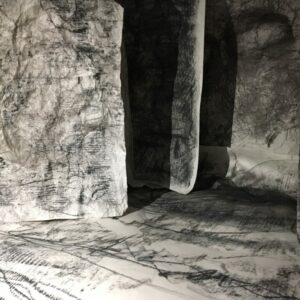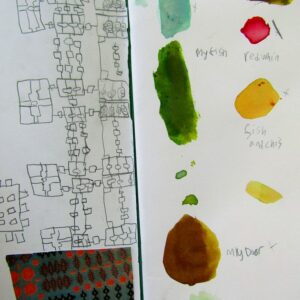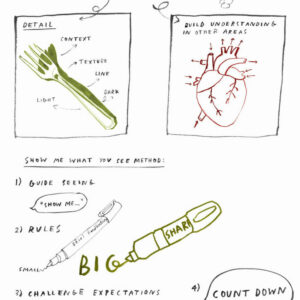Questions to Ask Children
Describe what you can see in the cave paintings?
Which drawings are your favourites?
What material do you think they might have used to create these paintings?
Questions to Ask Children
How do you think it would feel to discover prehistoric cave paintings?
Why is it important that these paintings are preserved?
How do these paintings differ from those in the Chauvet Cave?
The White Lady
The white lady cave painting is located in The Brandberg mountains in Namibia dating back to at least 2000 years ago.
It is usually assumed that the painting shows some sort of ritual dance.
It’s thought that the painting was probably made of ochre, charcoal, manganese, hematite, with blood serum, egg white, and casein used as binding agents.
Questions to Ask Children
Describe what you can see.
What animals do you think are depicted?
What do you like about this cave art?
What materials might you use to recreate the colours and textures of this painting?
How do these paintings differ from those in the Chauvet Cave?






